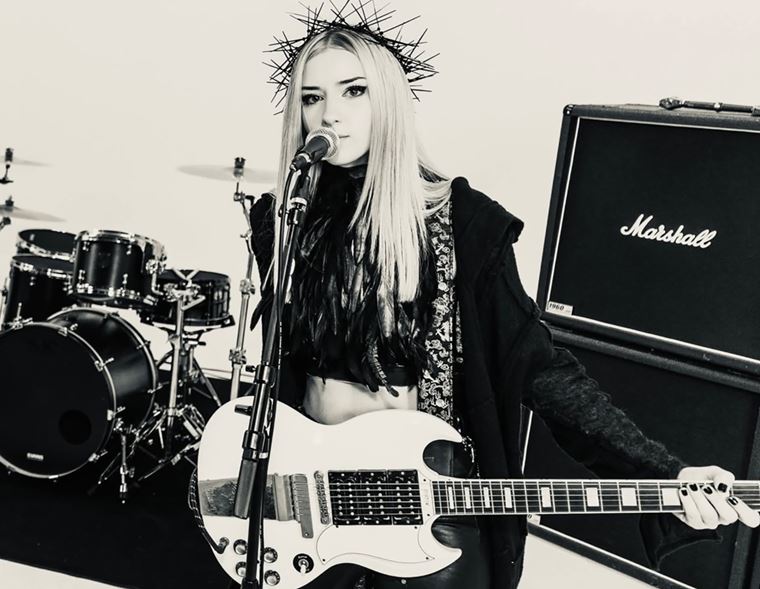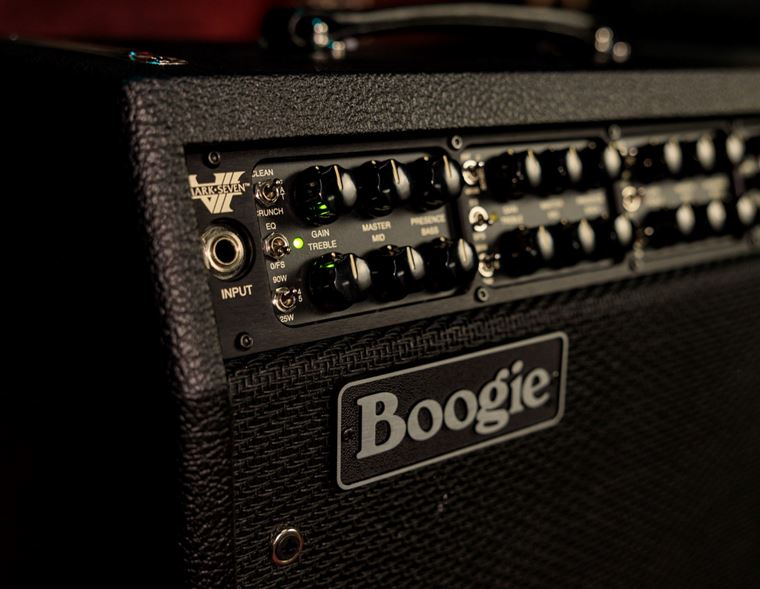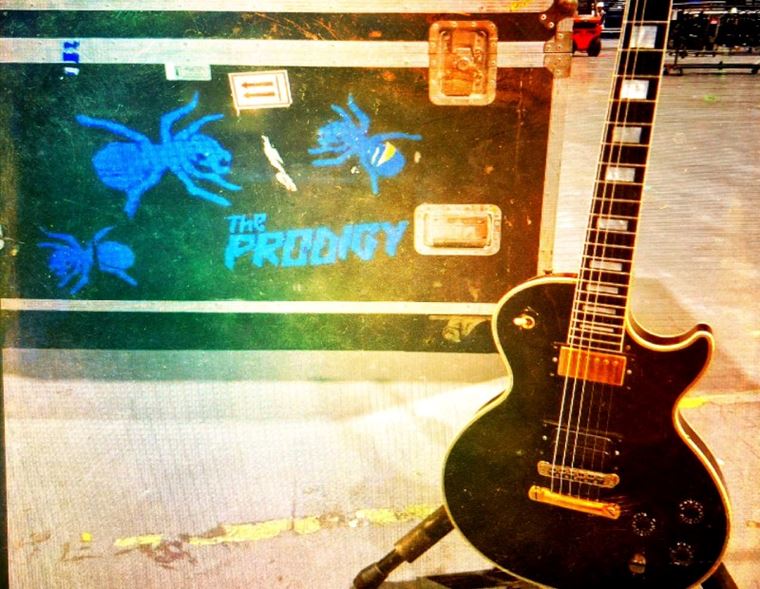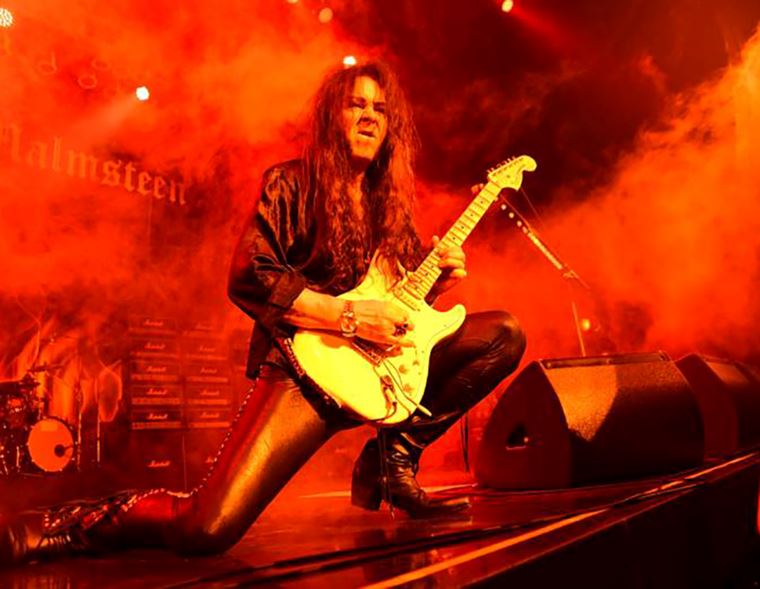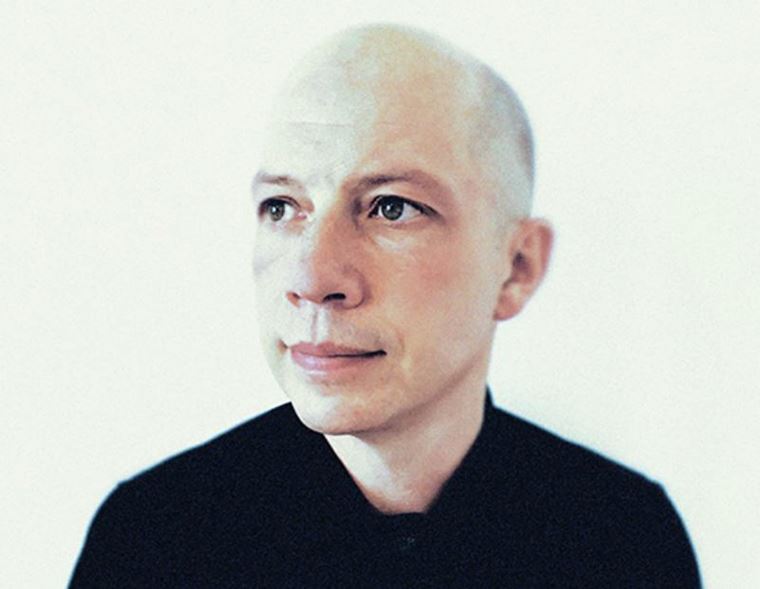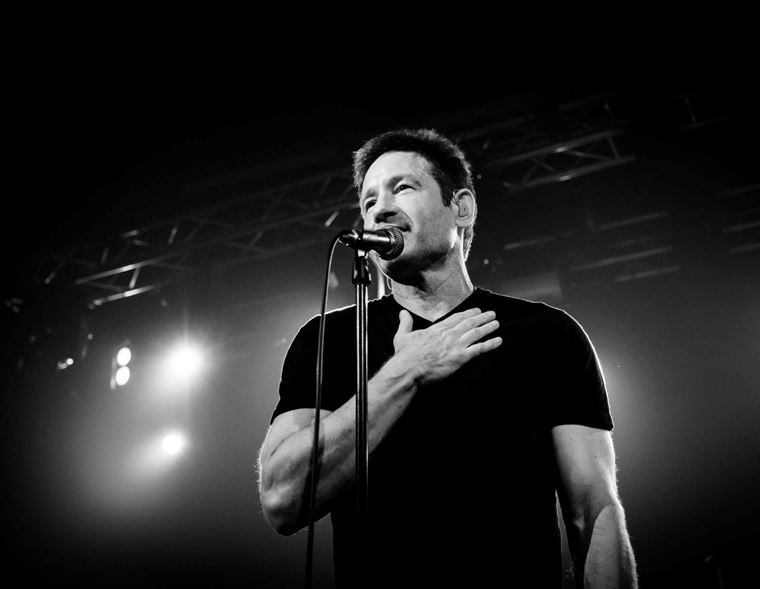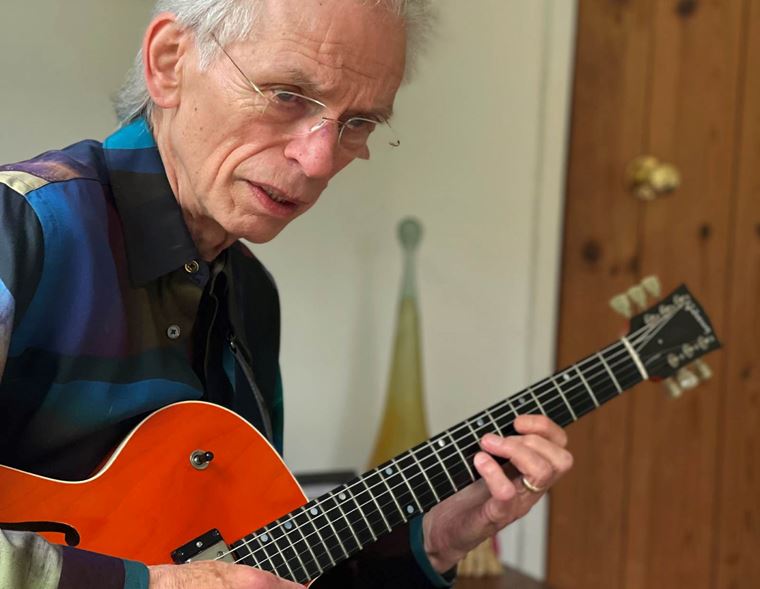guitarguitar Interviews ARIELLE
Published on 23 April 2021
Do you want to hear a great story?
We’ve got one for you.
This story is about an extraordinary musician who travels the world with her own home-made guitar, playing music from her 8 (soon to be 9) albums to adoring crowds on both sides of the Atlantic. It involves a mysterious man who goes missing, references to sacred geometry and features a supporting cast of characters that includes none other than Queen legend Brian May.
Best of all, this story is entirely true!
.jpg)
Sound good? Well, you’d better keep reading because we have it all here! Arielle is the artist in question, and we were lucky enough to enjoy an enthralling conversation with her via Zoom recently. Because of changes in international time zones, we caught Arielle on the move, travelling North from Florida to visit family. Nevertheless, she was more than happy to talk to us about her forthcoming album, Analog Girl in a Digital World, about the story behind her distinctive Two-Tone electric guitar, her years at the Musicians Institute in LA and her friendship with Brian May, which culminated in not only a role in the We Will Rock You London show but a very special collaboration.
We pick up the story a minute or so after being connected to Arielle and saying hello...
Arielle Interview:
guitarguitar: So, I figured we could talk about the new album, chat about guitars, and just go from there?
Arielle: Ok, that sounds good!
GG: So, where are you just now? Are you in Florida?
A: I am currently in Pennsylvania, bit I’m normally in Florida. Before covid I was actually just outside of London, but during this time, I wanted to be a bit closer to family and stuff. It’s been a little nuts.
GG: It definitely has been! So, you’re back over in America. Your new album, Analog Girl in a Digital World: did you record that during lockdown? Or had you finished it before?
A: I recorded that in October of 2019, so just before Covid happened. It was supposed to come out in February, so was the Brian May guitar, but because of a lot of the factories shutting down – we were supposed to time the album and the guitar together – we got postponed a year. So, I recorded it in Austin, Texas and Nashville, half in analog and half digitally. So, three different studios in 2019.
GG: Wow! So, this half analog, half digital thing: how does that work out? Are you talking, like certain songs are completely analog and others completely digital?
A: I was originally just gonna record the whole thing analog and I had a friend of mine, who owns a studio, talk me into the fact that you can still get a warm sound if you approach the recording with an analog board and outboard gear and vintage gear, and still gain some of the qualities of that, so I picked certain songs that I thought would do better recording to tape. ‘Piece of Mind’, ‘Still a Man’, ‘Digital World’ and ‘Living in a Fortress’ are all analog and the rest are digital. It literally is split. The whole thing for me was to compare which one I liked better and why, and just experiment with that.
.jpg)
GG: Okay, cool! With that theme, and the title track referring to a yearning for simpler, less technological times, is part of it about how people are missing out on a certain type of experience in life because they are so tied to their devices?
A: I think so, It’s probably one of the most common conversations that I have, which is that it’s kind of a lost artform to really learn something and to fully saturate yourself into whatever you’re interested in. There’s so much online, and on YouTube. I was really fortunate to learn most of what I know with guitar before YouTube was a thing. I got to go to school and learn a lot by just being there, and by being around people who know what they’re talking about. I think that it’s hard nowadays because we have these devices that can be really helpful if we approach them in a way that makes them not a crutch but an aid. But it’s hard to do that: it’s hard to find a balance because there’s so many distractions. The whole concept of the album is about my experience of feeling like...I like the impractical aspects of vintage gear and technology, and living in a world that’s really fast-paced and how that affects me musically as well as personally. It’s hard! So, thankfully, most of the people I surround myself with are like that, but if I really start to look at the way things are it scares me.
GG: Haha, okay, taking that further: when you were in the studio, for example, would you rather re-play a part – say a vocal part or a guitar part – rather than have an engineer auto-tune is or fix it with a plugin? Do you think it’s more beneficial to just nail it properly?
A: One hundred percent. I am completely against autotune. I have a big problem with it. I used to work in recording studios in LA and I was the engineer, and I was also demoing for different songwriters then. In the pop world of recording studios, it’s standard to have Melodyne and Autotune, as you know. It’s part of the sound. And I remember I was engineering and also being hired to sing on something. I thought I was sounding good in my headphones and as soon as I started talking, I heard (makes crazy noises) and was like, ‘You had Autotune on me the entire time I was singing? (laughs) Even live in the studio?’ And they were like, ‘Yeah, we always have’. And I realised that I sucked! It occurred to me that if I was gonna show up in a recording studio situation, or a live situation and not be able to sing a part of a song without being immensely pitchy, then I have a problem. And it’s a laziness.
"The whole album was recorded with each song as one take, all the way through, live, no click."
Ever since then, and that was 2008, I have not used it at all. I just decided, well, I’d better just not suck, because I’m gonna go either have to keep re-doing it, which I don’t like to do, or just be able to sign through a song like people used to have to do! This is what I mean with the technology: in the 40s and 50s, everyone’s in the same room and there’s a few microphones or there’s just the one microphone and everyone has to do it at the same time. If you are relying on technology to make yourself sound good and actually have a decent performance that you can’t pull of live, it’s inauthentic. So, the whole album was recorded with each song as one take, all the way through, live, no click. To me, what I was trying to do was combine the elements...my specific approach was the 60s and 70s. If you’re recorded to tape, once you start splicing and doing stuff, it’s really expensive! So we took the approach of the entire band, I even hired another guitar player! I saw Joe Bonamassa do this in the studio. We were doing a song together for his documentary, and so I got to watch him at Blackbird and he has two other guitar players who play with him!
GG: Oh yeah?
A: And I asked him, and he said, ‘Oh, I just don’t like to overdub the parts, I like it all to feel live.’ Like, that’s a great idea, and its humbling as a guitar player to do that. I could play the parts myself, but you miss something if you overdub things that maybe don’t need to be. So, the only song on the album that has any overdubs at all is when I was really trying to do the Brian May approach on ‘I’d Rather Be in England’.
GG: Sure.
A: So, the whole thing was ten - and to make it even a little bit harder, I’d never played with these people before – and I don’t send full demos. I send a recording of me with my acoustic guitar, just so they have the structure and the chord progression, and I’m like, ‘Alright, so I have to take the players that I believe are gonna be good enough that we can record the whole thing in a day’. It’s like 8 songs, in one take. And they pulled it off! I was a little bit nervous because I was thinking about playing at the same time, and I’m in a different room because of that so I’m kinda looking at them through the glass.
As you’ve heard, in the songs there’s a lot of different tempo changes and things that are hard to pull off in one take, but we did it and, honestly, I think that’s at least for me, the only way to do it. It makes it easier live: you have limitations put on you by the approach and then relying on the technology isn’t even important. That’s what I learned through the whole thing: it doesn’t matter if it’s a tape or if it’s digital, as long as you take the same approach of using your musicianship to be on the forefront instead of ‘oh, I’ll just fix that later’.
.jpg)
GG: Yeah, ok brilliant! You’ve touched on some of the things I wanted to talk to you about there so let me go back a little bit here. You sent out demos of you singing with acoustic guitar: is that typically how you write all of your music?
A: Um, it depends. If I really feel like I’m stuck, musically, I’ve got a bunch of instruments, so I’ll pick up something that gets me out of a rut. Maybe it’ll be...I’ve got a banjo that I play, or like a mandolin or something, but normally it’ll be either on a piano or an acoustic guitar. To me, that’s a little bit easier, because I don’t have to sonically think about tone or anything. Sometimes, if I’m writing and I’m using the electric guitar, I think more about the production than I do about the song itself. Sometimes that works okay, like if I’m working on a song that I want to be more kind of riff-oriented, but if I don’t, then I prefer it to be about the song. I’ll try to focus on just a neutral tone so I can focus on the writing.
I used to make fully produced demos with everybody’s part on them, and then what I realised was, one: I could not do the demo, and two: I think there’s a certain amount of energy that you get for a song before it becomes, I guess, more monotonous in the emotion. There’s like a rawness and if you keep tailoring it and altering it over and over and over again, it loses the natural element of where it came from. So, I always surround myself with great musicians and I’m like, ‘well, if I don’t like the part they come up with – which hopefully is a lot better than what’s in my head – I always have a plan B, C and D. But I just like to leave room for the people that I play with to add stuff.
"It’s kind of a lost artform to really learn something and to fully saturate yourself into whatever you’re interested in."
GG: Yeah, of course! You may as well see what they’ve got to offer. And this record is your 9th album. That sounds to me like you’re very, very productive! How often do you write? Is it all the time? And how much of it doesn’t get released?
A: I have a lot that will probably never see the light of day for a few different reasons! I got probably three or four hundred that will just sit there forever. (laughs) There’re a few reasons for that. One is because they were tied to an old record deal that I had, that in order to even try to have any sort of licensing would involve me having to deal with them, which isn’t fun. But also because they weren’t...because this one’s my ninth, it’s really embarrassing for me to feel like people can just go back and look at stuff. I think that’s kind of a new thing that we’ve been able to do, just the way the technology is, you can really see the curve of an artist’s growth now, much more than ever because it’s so easy to record and upload stuff. I’t embarrassing sometimes, when I have people listen to stuff form 2007 or even from just 3 or 4 years ago!
So, I’m always trying to write new stuff, and every time I write something, like the new album, I’m so over it (laughs) But yeah, what ends up happening is, I consider it like seasons. I have Winters where I have periods of months where I don’t write anything, and then I’ll have a spurt of, like, 30 songs in a month. And just everyday there’s a bunch of them. I try not to force it because I don’t usually write quality that way. Normally the way that it happens is I’ll just hear it in my head, like full songs or a melody with the harmony and the chord progressions underneath it. But it depends. Lately, it’s been hard. Is also depends on what’s going on. I’ve been so focussed mentally on this one and promoting it, that there’s really no creative focus for writing new ones.
Two-Tone and the Mystery of the Missing Guitar Builder
GG: Sure, well it’ll come back no doubt, given that you’ve been so productive already. Now, a big part of your story is – and we’ll get to Brian May, haha! - but a big part of it is Two-Tone, your guitar. When I was researching you earlier on, Arielle, there was someone who co-built the guitar with you, Patrick Yates, and he went missing?
A: Oh, Patrick, yeah.
GG: Yeah! What happened there? Is he back now? What’s the deal?
A: You know, the longer he’s been gone, the more I’ve kind of made it this weird fable of his existence. He’s a real guy! (laughs) I found a picture of him recently and was like, ‘There he is!’ I forgot what he looked like because when I met him, cell phone cameras weren’t really that great and I didn’t have anything that was very representative of my memory of him. In 2006 I met him at the Uli Jon Roth Sky Academy, and he had a couple of amateur guitars that he had built. They looked terrible (laughs) but I think, because of that, it made him not very threatening, you know?
GG: Yeah.
A: Because of Brian May, I thought, ‘I would love to have my own guitar, and because I was going to the Musician’s Institute in LA, I had five guitars. In each one, I liked a certain element, but none of them had everything I wanted, so it was hard in the morning when I was like, ‘well, I don’t know which one to bring!’, when I’d have to play it for 8 hours during class. So, I asked him. I said, ‘hey, would you make a guitar with me?’ and he said, ‘sure’. He didn’t charge me anything for it, other than I bought all the parts. I think it ended up being $550, and most of that was the pickups.
"I try not to force it because I don’t usually write quality that way. Normally the way that it happens is I’ll just hear it in my head, like full songs."
So, we started building the guitar and it took a while because I was travelling a bit and he lived in the desert of Azusa, California. They used to have a Jackson shop which Fender owned at the time and so they would let us borrow some of their C&C machines and all sorts of stuff that they had, to do the things we needed help with. He’d only made a couple of guitars and I didn’t know anything about it. So, it’s funny to look back at the guitar now because I think we got a lot of things right by accident.
But anyway, I was actually digging through my old email address where Patrick and I used to talk a lot and send ideas back and forth. I read the email – I actually saved it – and he kept saying ‘I’ve gotta hurry, I’ve gotta hurry!’, cause it took us a while to finish!
GG: Yeah!
.jpg)
A: And I was like, why? Where ya going? He, uh...one day he disappeared. And he had the guitar! I called him and the phone didn’t ring, it was disconnected. I went to his house and he wasn’t there. His email got returned. I was upset because he had our guitar, and I didn’t know where he went. I knew, based on what he had emailed me prior, that something bad had happened. I found out eventually through a fan that’s a private investigator that he got arrested. I think he was selling pot and he got arrested. You can see that: it’s on public records. And then he disappeared, and I was like, ‘Well, I guess I don’t have the guitar anymore’. A couple of months later, I get a big box in the mail and it was my guitar in pieces! So, I’ve never talked to him since.
GG: Oh, really?
A: No, and after that he disappeared. He went to jail and after that, he moved to, like, Idaho with his family, and then I don’t know where he went. I can’t find any record of him. I’ve talked to mutual friends, and I don’t even know if he’s alive anymore.
GG: Wow.
A: It’s this weird story. He’s like this crazy alien that came from another planet to deliver this guitar to me and then disappeared. (laughs) It’s so crazy, because those kinds of things don’t happen, like, ever. Especially not nowadays when you can track people with Facebook and things. People don’t just drop off the face of the earth. But he did! And he left me with a gift. I’ve always left the door open, that maybe he would come around again, and I could thank him, and we could be proud of what we created, long before we had any idea what would happen with that guitar. Yeah, so that’s a completely true story, I talk about him all the time, just hoping that maybe he’ll come around again. At this point, I don’t even know if he’s alive.
GG: Goodness me! Well, the good thing is, even us talking about him here means that there are still references to him, and that he might see it somehow. It he’s still cutting about, at least you’re still keeping his name out there. That’s a great thing to do.
A: Thank you.
.jpg)
GG: Yeah. Now, there’s a couple of things I’d love to ask about the guitar, because obviously it’s quite unusual. So, this is the original Two-Tone, not the BMG signature model. I read that it has a longer scale length. Is that unusually long? Or Fender scale?
A: It’s a Fender scale. Well, it’s not exactly a Fender scale. We didn’t measure it properly (laughs), but it’s close enough to 25.5”. It looks longer because of what we did. I’m basically moved where the pickguard is and the pickups are, if you’re looking down at the guitar, I moved them to the left. It looks like its longer because I moved it away from the body a little bit. Yeah, it’s very frustrating because it doesn’t fit the regular gig bags or anything! It is pushed out on the Brian May guitars, but it’s a bit smaller on there so I think that helps.
GG: And the reverse headstock, it certainly looks cool, but it changes the tension, right? As we know from Hendrix, the low ‘E’ string will now be longer than usual, pas the nut, and the high ‘E’ is a lot shorter. Do you notice that tension change with Two-Tone as well?
A: Oh, for sure. It has a very imbalanced bottom end that I kinda like. It’s very floppy but it does make the tension extremely tough to work with for long periods of time. I’m not sure if that’s part of the way that the headstock is, like, he coulda done better with the angle of it and a couple of other things but yeah, it’s not an easy guitar to play. It’s comfortable but for long periods of time, it’s not easy.
GG: So, you chose to have a Fender-style tremolo/whammy bar on it, and I personally as a player – and I’m speaking on behalf of all guitarists who have to tolerate this – I have heavy tuning problems! You have yours set so there’s a lot of up-bend going on as well...
A: Yeah, it’s a minor third if you pull up.
GG: Right, okay! That’s a fair amount! Do you have tuning issues? And if not, what are you doing to stop it?
.jpg)
A: I used to, I used to have really bad tuning issues. I started changing things one at a time, because I wanted to see what the actual problems were. If I do drop tune the guitar, that’s when I have issues, and if a string breaks, it’s over. But what I started to do has, I have the LSR roller nut which I think is really helpful. That’s what Jeff Beck does, I took that from him. Also, I changed the tuning gears to Steinberger gearless tuners. Those have really helped a lot; I think that was one of the best things I did. Then I put two string trees because the strings are so far away, the way that I have that reverse headstock, and that helps a lot.
Also, time: the guitar, when it was new was new, was just a piece of junk, honestly (laughs). I think I have loved that guitar enough to sound good because it has changed a lot over time. There were years where I didn’t like it at all. I’ve notices it get better with age, and I’ve had a lot of people work on stuff like intonation and things, working on the frets that were not done very well. So, I think if you have a problem with tuning, just start with one or two things and try to find what the actual problem is, because it’s not always the bridge. ~that might make the tuning a weaker point for you but try small variations of things and altering one piece. Then you’ll see if that helped or didn’t help, instead of doing everything at one, because that’s where I’ve made mistakes.
GG: Yeah, that makes sense: then, it’s a process of elimination rather than going, ‘where did I go wrong?’
A: Exactly! And there’s always a solution: you can always make something better. And if it doesn’t fix itself completely, then you just make another one that’s better. That’s the way I see it!
Sacred Geometry
GG: Haha, exactly! Now, on the back of your guitar, I did notice on a video that you’ve got a little piece of bronze that’s almost like a Shri Yantra or something, like a sacred geometry etching. Is that part of something that comes into your artistic life in other ways as well?
A: It’s funny you noticed that because I used to have it on there and it fell off and I don’t know when! One day, it just wasn’t there. So, I think that objects, inanimate objects, can have an energy to them, especially things of that nature. I mean we’re talking about a natural material – though in a way everything’s a natural material, some are just farther removed than others – but things like, you know, I’ve got a couple of minerals in Two-Tone and things. Sometimes they disappear and I’m not, ‘okay, I guess the job of what they were doing is done’. That came from a time period where I was creating music for some monks.
GG: Oh, wow!
A: In early 2011. They gave me this sacred geometry piece. I love sacred geometry and Leonardo da Vinci and how he’s worked with all that, what it symbolises and how it works with concepts of the universe and stuff. So, I put it on the back of the guitar as I thought it would create energy or something, I don’t know!
GG: Mm-hmm!
A: And I guess it fell off. Its job was done. (laughs)
GG: Yeah, yeah! Fair enough! That makes sense! And without getting too into it, because it’s a huge subject, music is a product of sacred geometry as well: Pythagorean shapes match up with our favourite chord progression and so on. We see these as shapes on the fingerboard.
.jpg)
A: Exactly!
GG: So I just wondered if that’s something you made use of creatively inside your music?
A: Sacred geometry?
GG: Mmm.
A: Um, I’ve never considered the sacred geometry as shapes, but I do think of frequencies as shapes.
GG: Ah, ok.
A: Like, if we’re in 440Hz tuning, I’ve messed around with different frequencies and the way that they add up. There’s all sorts of theories about, you know, different tuning structures – 440 to 432 – those kinds of concepts, and they’re real in my opinion. The way they can penetrate people’s emotions, I think, is a real thing. I think my superpower, at least with what it is that I do, is that I like to think I can make people feel whatever it is that they have, it doesn’t even matter what it is. The way that I can do that is – and you can alter it, so if you change the tuning of your guitar, they can feel a different emotion from it, even though they wouldn’t necessarily know that, unless you compare it back and forth, which I’ve done a lot of.
So, I think about it in that way, and I think about different notes, keys, sounds and words as different colours. My voice can do certain things that the guitar can’t. A producer friend of mine, Jack Joseph, describes it as ‘each instrument has a different tear’. Each instrument can affect the human emotion in a different way. If I were to use sacred geometry in that way, I would approach it in a wider sense of what music can actually do to affect people. I think about it all the time.
GG: Yeah, I’m with you. We don’t really know half of it, in terms of potential. Now, onto a somewhat less celestial subject, but one that I’m always interested in, is what you Americans call ‘picks’ and us Brits call ‘plectrums’. They are very significant and very underrated in terms of the importance lots of players put on them. What’s your plectrum preference?
.jpg)
A: I use one about half the time. I’m usually hybrid picking, so I’ll hold it in one finger and use my fingers. If I wanna have a more accurate run that’s a little bit faster, it helps. It’s one of the only reasons I use a pick, as well as acoustic guitar playing. Other than that, I kinda use my fingers or a hybrid of both of them. I use Dave picks. I have for a long time. I experimented with everything, but I like them because they have a grip: I don’t hold anything very hard, I’m a very light player normally. I like ‘em because I don’t want this clanky, ice pick-y sound with a pick, I just want it to be able to be a little bit harder and cleaner than what my fingers can do sometimes. I don’t rely on it. For acoustic, I use some thumb picks as well, stuff like that.
GG: Okay, so it’s mostly hybrid for you.
A: Yeah, its usually just the fingers and then I have the pick there when I need it.
GG: Cool. Now, I won’t keep you too much longer as you’ve been very generous with your time. I really appreciate it! Obviously, your guitar is being released via Brian May Guitars: so, let’s talk about Brian May!
.jpg)

A: Okay!
GG: You first met him at a signing, right?
A: Yeah, in 2007 he was doing a book signing in LA when I was going to music school there. I had always known that Brian and I were going to be friends (laughs): as a really young girl I had posters of Queen all over my walls and I would tell people ‘Yeah, he’s my friend!’ and they’d be like ‘yeah, ok...’ And honestly, I think it’s what kept me safe, from really getting in trouble in school or outside of that. The fact that I had something in my mind that I was looking forward to: not necessarily being his friend but being, uh, his, being the equal to him. Instead of idolising my heroes, I’ve just always wanted to be an equal.
GG: Yeah.
A: And so, when that time came, I went to the book signing. I had no idea what I was gonna do. I showed up and we started talking about mental health stuff, actually. Most of our connection has not been about the guitar: we openly talk about struggling with depression. We’ve both sensitive in that way and the way that we connected was on a human level first, which is why I think it’s lasted as long as it has.
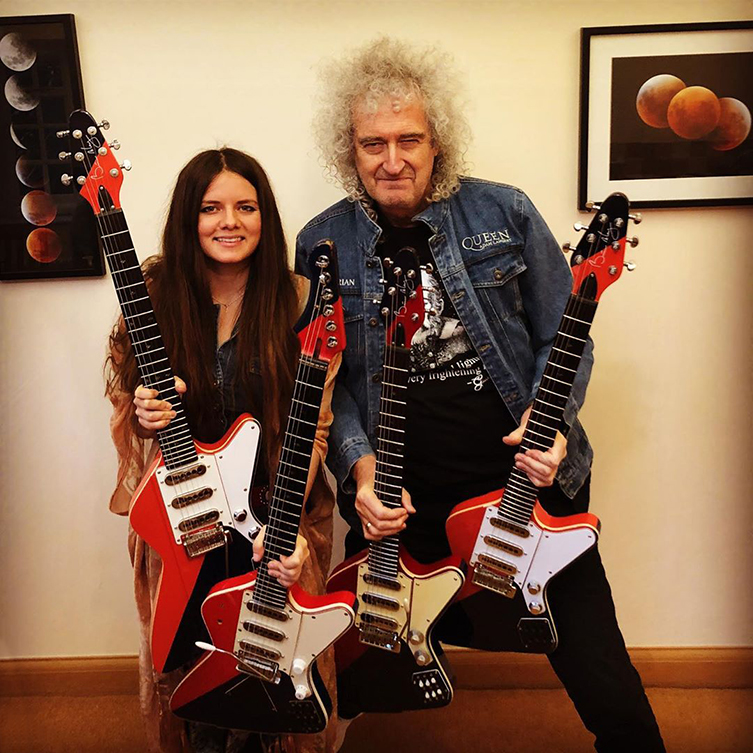
(Photo: Peter Malandrone).jpg)
And then of course we talk about guitars! He invited me to come to England to do We Will Rock You with him. At that point, we were talking every day through email, I was hanging out with his kids and it’s been so long now...it was an accident with the guitar! I would never have asked him to put out this guitar, I was gonna do it myself. We were meeting up for lunch three years ago and he asked what I was doing. ‘Oh, I’m just putting out these guitars!’ And he said, ‘well, who’s doing it?’ and I said, ‘Just a friend and I. We’re gonna make a couple a month, however many we can.’ And he said, ‘Well, why doesn’t Brian May Guitars do it?’ It’s crazy that he respected me enough and the guitar enough to even consider it. I would never have asked that, and I never thought that that would’ve been a thing. So, here we are, three years later.
GG: What an amazing story. It’s what dreams are made of! Now, I have nearly everything I need so here’s my last question. Things are still a bit strange out there in the world, and your record is out on May 7th, what are your tentative plans after the release? You can’t really book a tour just now, can you?
A: Yeah, that’s the thing. We’re all trying to figure out what’s happening with that. More than likely it’s gonna be the second quarter of 2022. For touring, I focus on the US and the UK normally, so it’s kinda back and forth, back and forth touring when I do. But yeah, I’ve got another album that I’m gonna be working on in August, cause I’m ready for something else. I’m gonna try to do another album, I’m gonna see what I can do. I’ll give myself like 5 days in the studio and shove whatever I can in there. So, that’s gonna happen but then the other thing that I’m gonna be working on is a non-profit called the Tonewood Forest. It was something that began actually out of guilt. I have so many prototypes of my guitar and I don’t know how many trees I’ve cut down on behalf of just myself but I feel terrible about it. So, I just bought seeds online. I had no idea what I was doing, I bought a couple of books about growing a tree from a seed, and I made a goal that the first batch of the Brian May guitars – there are 24 in the very first batch – I would have a tree for each one of those. It took me a couple of months just how to figure out how to get the dang thing to sprout!
"Instead of idolising my heroes, I’ve just always wanted to be an equal."
It’s actually turned into a fully fledged non-profit now, where I’ve got some plots of land and I’m growing trees used for musical instruments like mahogany and other, what are considered tonewood, trees. So that’s been a big focus for me: trying to give back for all the resources that I’ve been using, and a lot of people have been really excited about that. Brian and I are talking about collaborating on that as well. He’s got a forest of his own that he does stuff with, so that’s been the other focus that I’m excited about. I would like to work on sustainable guitar manufacturing because I think it’s something we’re not really paying attention to and eventually, after cutting down all of the ebony and having to wait another 70 years for it to mature, we’re gonna realise we have some issues. In my little area, I’m trying to give back a little and work on something a bit more sustainable than what’s going on.
.jpg)
Arielle’s a busy woman indeed! We really enjoyed talking to her, and appreciated how open she was about so many things. It’s clear that her talent, determination and savvy attitude have all help propel her career to great heights. Here’s hoping her friend Patrick shows up sometime soon, safe and well! In the meantime, be sure to check out Arielle’s new album, Analog Girl in a Digital World, when it’s released on May 7th. Keep up with Arielle’s releases and touring schedule at the official Arielle website, where you can also order the new album.
We’d like to thank Arielle for giving us her time, and such a great interview. We’d also like to thank Peter Noble for putting us in touch.



